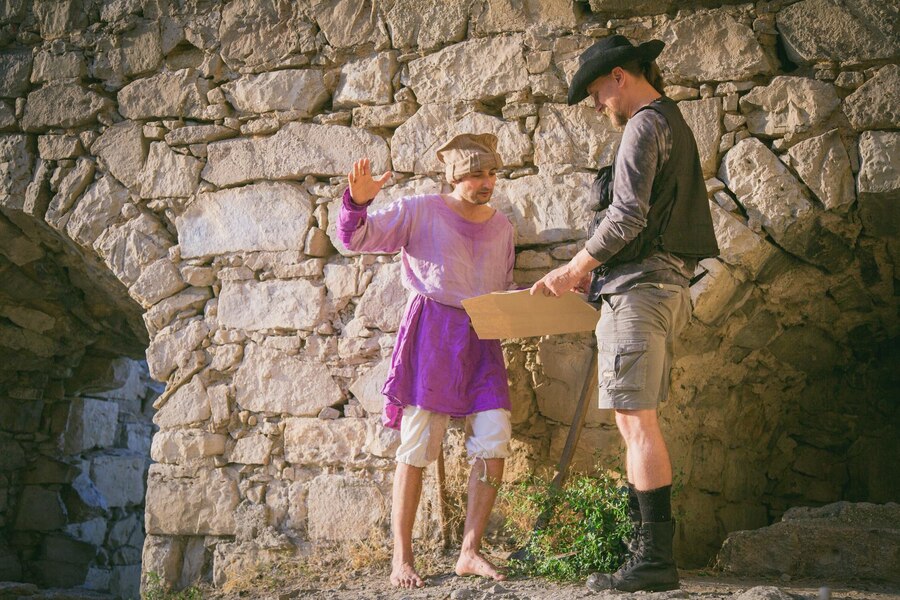Barcelona is a city that offers a rich tapestry of culture, history, and modernity, attracting millions of visitors every year. Known for its iconic landmarks like the Sagrada Familia and Park Güell, as well as its lively beaches and bustling La Rambla, this city is often perceived as a well-trodden tourist destination. However, beyond the main attractions lies a treasure trove of off-the-beaten-path adventures that promise a deeper, more authentic experience. These hidden gems allow travelers to explore the lesser-known facets of Barcelona, offering a more intimate and personalized encounter with the Catalan capital. In this comprehensive guide, we will delve into some of the most unique, off-the-beaten-path adventures you can experience in Barcelona, from secluded nature spots to quirky historical sites, and everything in between. Let’s embark on a journey to discover Barcelona like never before, stepping off the usual tourist trail and into the heart of the city’s hidden secrets.

1. Explore the Untouched Beauty of Collserola Natural Park
Nestled just outside the urban sprawl, Collserola Natural Park is one of the most underrated yet captivating natural escapes near Barcelona. This vast green space, which covers over 8,000 hectares, offers an oasis of tranquility with scenic walking trails, cycling paths, and panoramic views of the city. Whether you’re a hiking enthusiast or simply looking for a peaceful retreat, Collserola provides the perfect setting for an off-the-beaten-path adventure.
Key Highlights:
- Bunkers del Carmel: A former military site turned viewpoint, the Bunkers offer one of the best panoramic views of Barcelona. It’s a serene alternative to the crowded Montjuïc or Tibidabo.
- Hiking Trails: With over 100 kilometers of trails, visitors can explore lush forests, rolling hills, and picturesque landscapes. Some popular routes include the Carretera de les Aigües trail and the climb to the highest point, the Turó de l’Home.
- Wildlife: Collserola is home to diverse wildlife including boars, deer, and various bird species, making it an ideal location for nature lovers and wildlife photography.
For more information on the park and its activities, check out this comprehensive guide from Barcelona’s Official Tourism Website.
2. Discover the Artistic Heritage at the Museu de la Xocolata (Chocolate Museum)
While many tourists flock to the Picasso Museum or the Joan Miró Foundation, there’s a lesser-known but equally fascinating museum in Barcelona that celebrates one of Spain’s favorite indulgences: chocolate. Located in the El Born district, the Museu de la Xocolata is a quirky and delightful stop for anyone with a sweet tooth or a love for art.
This museum, housed in a former convent, not only explores the history of chocolate but also showcases incredible chocolate sculptures by local artists. The museum’s exhibits span centuries of chocolate-making traditions in Spain, and visitors can learn about the evolution of chocolate from its arrival in Europe to its current status as one of the world’s most beloved treats.
Key Highlights:
- Chocolate Sculptures: The museum is filled with intricate sculptures made entirely from chocolate. From life-sized figures to whimsical designs, these creations are a sight to behold.
- Interactive Workshops: For an immersive experience, you can participate in chocolate-making workshops and even create your own delicious masterpieces.
- Historical Insight: Learn about the arrival of chocolate in Europe and its connection to Spain’s colonial past.
For more information, visit Museu de la Xocolata.
3. Wander Through the Hidden Alleys of the El Raval District
El Raval is one of Barcelona’s most vibrant and culturally diverse neighborhoods, yet it remains somewhat under the radar for many tourists who stick to the more popular areas like the Gothic Quarter. This eclectic district is a maze of narrow, winding streets, street art, and unique shops, making it an ideal spot for off-the-beaten-path explorers.
The heart of El Raval is its blend of old-world charm and modern creativity. The area is home to a number of independent galleries, vintage stores, and cozy cafes that offer a different vibe from the commercialized tourist zones.
Key Highlights:
- Street Art: El Raval is renowned for its street art scene. As you wander through its alleys, you’ll encounter a plethora of murals and graffiti by local artists.
- Cultural Diversity: The district’s multicultural atmosphere is reflected in its vibrant food scene, with plenty of eateries offering flavors from around the world, especially from the Middle East and South Asia.
- The Barcelona Museum of Contemporary Art (MACBA): While not entirely off the radar, MACBA is often overlooked by tourists focused on the more famous museums. It’s a fantastic place to experience contemporary art in a dynamic, engaging setting.
For more details, check out Barcelona Life: El Raval.
4. Take a Day Trip to the Enchanting Village of Sitges
Just a short train ride from Barcelona, Sitges is a picturesque seaside town that offers a different pace and charm compared to the bustling metropolis. Known for its sandy beaches, Mediterranean climate, and vibrant nightlife, Sitges is often overshadowed by Barcelona’s popularity. However, its unique blend of history, culture, and natural beauty makes it a hidden gem that’s worth the trip.
Key Highlights:
- Beaches: Sitges boasts over 17 beautiful beaches, many of which are less crowded than those in Barcelona. Platja de Sant Sebastià and Platja de la Fragata are particularly scenic.
- Historic Sites: Wander through the town’s historic center and visit the Church of Sant Bartomeu i Santa Tecla, perched above the sea with stunning views.
- Nightlife: Sitges is known for its lively nightlife, particularly its annual Sitges Film Festival, one of the most important in Europe for fantasy and horror films.
Find out more about Sitges on Visit Sitges.
5. Stroll Through the Hidden Gardens of Barcelona
While many visitors are familiar with the more famous gardens of Barcelona like the Botanical Gardens or the parks designed by Antoni Gaudí, there are a number of lesser-known green spaces that offer a peaceful escape from the hustle and bustle. These hidden gardens are scattered throughout the city, providing serene environments for locals and savvy travelers who want to experience Barcelona’s natural beauty in a quieter, more intimate setting.
Key Gardens to Visit:
- Jardins de Laribal: Nestled on Montjuïc Hill, this garden is a beautifully landscaped spot with fountains, lush vegetation, and breathtaking views over the city.
- Parc del Turó de la Peira: Located in the Horta-Guinardó district, this park is less crowded but offers panoramic views, walking paths, and serene surroundings.
- Jardins de Joan Maragall: Situated near the Palau Reial, these gardens offer a peaceful oasis of fountains, statues, and well-maintained greenery.
Learn more about Barcelona’s hidden green spaces on Barcelona Nature.
6. Unique Barcelona Experiences: A Comparative Table
| Activity | Best for | Location | Why It’s Off-the-Beaten-Path |
|---|---|---|---|
| Bunkers del Carmel | Scenic Views, Photography | Collserola Natural Park | A secret viewpoint with panoramic views of Barcelona |
| Museu de la Xocolata | Art, Chocolate Lovers | El Born District | A quirky, niche museum that explores chocolate art |
| El Raval District | Street Art, Local Culture | El Raval | A vibrant, multicultural neighborhood with hidden gems |
| Sitges Day Trip | Beaches, Relaxation, Culture | Sitges, near Barcelona | A charming seaside town with fewer crowds than Barcelona |
| Jardins de Laribal | Nature, Tranquility | Montjuïc Hill | A peaceful garden with scenic views and historic elements |
Frequently Asked Questions (FAQ)
1. What is the best time to visit Barcelona for off-the-beaten-path experiences?
The best time to visit Barcelona for exploring hidden gems is during the spring (April to June) or autumn (September to November). These months offer pleasant weather and fewer crowds compared to the peak summer months.
2. Is Collserola Natural Park suitable for beginners?
Yes, Collserola has trails that cater to various fitness levels. While some hikes may be challenging, there are easier, flat paths that offer an enjoyable walk through the park.
3. How long should I spend in Sitges?
A day trip is typically sufficient to explore Sitges. You can spend your time wandering through the historic center, visiting the beaches, and enjoying local cuisine. However, if you want to soak up more of the town’s laid-back vibe, you could easily spend a weekend here.
4. Are there any hidden bars in El Raval?
Yes, El Raval is known for its hidden bars and speakeasies. One such spot is Bar Marsella, one of the oldest and most iconic bars in Barcelona, known for its absinthe and unique atmosphere.
5. How do I get from Barcelona to Sitges?
Sitges is easily accessible by train from Barcelona’s Passeig de Gràcia or Sants stations. The journey takes around 40 minutes, making it a convenient day trip destination.
Conclusion
Barcelona is a city that constantly surprises, offering much more than what meets the eye. While it’s easy to get caught up in the famous landmarks, such as La Sagrada Familia and Park Güell, the true magic of the city lies in its lesser-known corners. Whether you’re hiking through the tranquil landscapes of Collserola Natural Park, indulging your senses at the Museu de la Xocolata, or immersing yourself in the vibrant culture of El Raval, Barcelona has hidden treasures just waiting to be explored. By stepping off the beaten path, you can experience the authentic essence of the city, discover new perspectives, and create memories that go beyond the typical tourist experience. So, the next time you find yourself in Barcelona, venture beyond the popular sights, and embark on an off-the-beaten-path adventure that will leave you with a deeper connection to this magnificent city.


